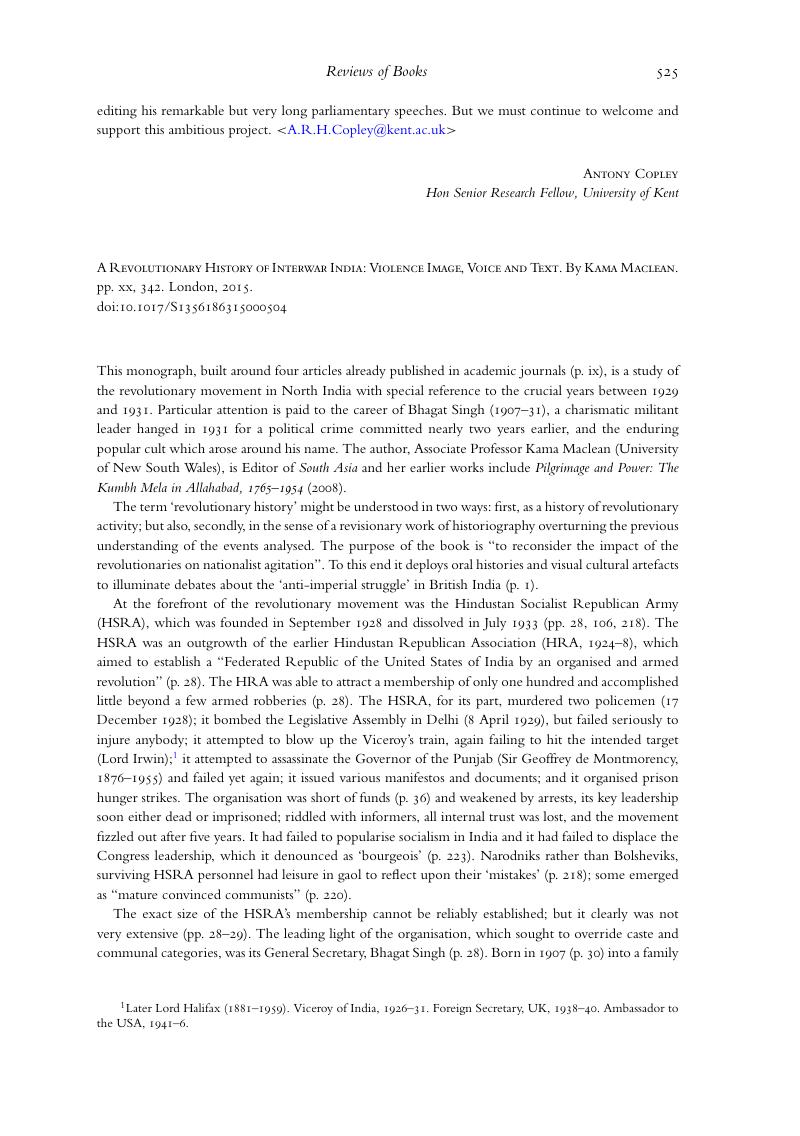No CrossRef data available.
Published online by Cambridge University Press: 23 September 2015

1 Later Lord Halifax (1881–1959). Viceroy of India, 1926–31. Foreign Secretary, UK, 1938–40. Ambassador to the USA, 1941–6.
2 Furthermore, the Bhagat Singh genre of film does not appear to have made any impact at the Cannes or Venice festivals.
3 But the Congress did not appear to mourn with the bereaved relatives of J. P. Saunders. No doubt the family would have gained immense comfort and consolation from the notion that the murder was, in the author's words, “an act performed with relative detachment and with discernible regret” (p. 230).
4 Collected Essays, Journalism and Letters (London, 1970), volume IV, pp. 523–4. And perhaps it was just as well that Gandhi never had to test the efficacy of ‘non-violence’ against an imperial power such as wartime Japan. It is also noteworthy that, whereas the HSRA had a membership barely reaching three figures, the all-volunteer Indian Army numbered 2.5 million in 1945 (JRAS, July 2015:526).
5 BBC News (online), 14 March 2015; accessed at 1149h BST on Saturday 18 July 2015.